Machine Learning-Based Calibration of Low-Cost Air Temperature Sensors Using Environmental Data
Abstract
:1. Introduction
2. Materials and Methods
2.1. Data Acquisition
2.2. Calibration Method
2.3. Performance Evaluation
3. Results
3.1. Indoor Experiment
3.2. Cross-Validation within a Location
3.3. Cross-Validation between Locations
4. Discussion
5. Conclusions
Acknowledgments
Author Contributions
Conflicts of Interest
References
- Cardinali, C. Monitoring the observation impact on the short-range forecast. Q. J. R. Meteorol. Soc. 2009, 135, 239–250. [Google Scholar] [CrossRef]
- Wang, Z.Y.; Zheng, Y.C.; Li, J.X. Early Warning Systems for the Reduction of Natural Disasters in China. In Early Warning Systems for Natural Disaster Reduction; Springer: Berlin/Heidelberg, Germany, 2003; pp. 15–18. [Google Scholar]
- Kumar, K.; Parida, M.; Katiyar, V. Short Term Traffic Flow Prediction for a Non Urban Highway Using Artificial Neural Network. Proc. Soc. Behav. Sci. 2013, 104, 755–764. [Google Scholar] [CrossRef]
- Pierce, F.; Elliott, T. Regional and on-farm wireless sensor networks for agricultural systems in Eastern Washington. Comp. Electron. Agric. 2008, 61, 32–43. [Google Scholar] [CrossRef]
- Hwang, J.; Shin, C.; Yoe, H. Study on an agricultural environment monitoring server system using Wireless Sensor Networks. Sensors 2010, 10, 11189–11211. [Google Scholar] [CrossRef] [PubMed]
- Qu, Y.; Han, W.; Fu, L.; Li, C.; Song, J.; Zhou, H.; Bo, Y.; Wang, J. LAINet—A wireless sensor network for coniferous forest leaf area index measurement: Design, algorithm and validation. Comp. Electron. Agric. 2014, 108, 200–208. [Google Scholar] [CrossRef]
- Kuwagata, T.; Yoshimoto, M.; Ishigooka, Y.; Hasegawa, T.; Utsumi, M.; Nishimori, M.; Masaki, Y.; Saito, O. MeteoCrop DB: An agro-meteorological database coupled with crop models for studying climate change impacts on rice in Japan. J. Agric. Meteorol. 2011, 67, 297–306. [Google Scholar] [CrossRef]
- Laurenson, M.; Otuka, A.; Ninomiya, S. Developing Agricultural Models Using MetBroker Mediation Software. J. Agric. Meteorol. 2002, 58, 1–9. [Google Scholar] [CrossRef]
- Fukui, S.; Ishigooka, Y.; Kuwagata, T.; Hasegawa, T. A methodology for estimating phenological parameters of rice cultivars utilizing data from common variety trials. J. Agric. Meteorol. 2015, 71, 77–89. [Google Scholar] [CrossRef]
- Wang, N.; Zhang, N.; Wang, M. Wireless sensors in agriculture and food industry—Recent development and future perspective. Comput. Electron. Agric. 2006, 50, 1–14. [Google Scholar] [CrossRef]
- Zia, H.; Harris, N.R.; Merrett, G.V.; Rivers, M.; Coles, N. The impact of agricultural activities on water quality: A case for collaborative catchment-scale management using integrated wireless sensor networks. Comput. Electron. Agric. 2013, 96, 126–138. [Google Scholar] [CrossRef]
- Buratti, C.; Conti, A.; Dardari, D.; Verdone, R. An overview on wireless sensor networks technology and evolution. Sensors 2009, 9, 6869–6896. [Google Scholar] [CrossRef] [PubMed]
- Ojha, T.; Misra, S.; Raghuwanshi, N.S. Wireless sensor networks for agriculture: The state-of-the-art in practice and future challenges. Comput. Electron. Agric. 2015, 118, 66–84. [Google Scholar] [CrossRef]
- Akkaya, K.; Younis, M. A survey on routing protocols for wireless sensor networks. Ad Hoc Netw. 2005, 3, 325–349. [Google Scholar] [CrossRef]
- Akyildiz, I.; Su, W.; Sankarasubramaniam, Y.; Cayirci, E. Wireless sensor networks: A survey. Comput. Netw. 2002, 38, 393–422. [Google Scholar] [CrossRef]
- Akyildiz, I.F.; Kasimoglu, I.H. Wireless sensor and actor networks: Research challenges. Ad Hoc Netw. 2004, 2, 351–367. [Google Scholar] [CrossRef]
- Akyildiz, I.F.; Melodia, T.; Chowdhury, K.R. A survey on wireless multimedia sensor networks. Comput. Netw. 2007, 51, 921–960. [Google Scholar] [CrossRef]
- Jha, C. (Ed.) Thermal Sensors: Principles and Applications for Semiconductor Industries, 1st ed.; Springer: New York, NY, USA, 2015. [Google Scholar]
- Hubbard, K.G.; Lin, X.; Walter-Shea, E.A. The Effectiveness of the ASOS, MMTS, Gill, and CRS Air Temperature Radiation Shields. J. Atmos. Ocean. Technol. 2001, 18, 851–864. [Google Scholar] [CrossRef]
- Sun, X.; Yan, S.; Wang, B.; Xia, L.; Liu, Q.; Zhang, H. Air Temperature Error Correction Based on Solar Radiation in an Economical Meteorological Wireless Sensor Network. Sensors 2015, 15, 18114–18139. [Google Scholar] [CrossRef] [PubMed]
- Thomas, C.K.; Smoot, A.R.; Thomas, C.K.; Smoot, A.R. An Effective, Economic, Aspirated Radiation Shield for Air Temperature Observations and Its Spatial Gradients. J. Atmos. Ocean. Technol. 2013, 30, 526–537. [Google Scholar] [CrossRef]
- Holden, Z.A.; Klene, A.E.; Keefe, R.F.; Moisen, G.G. Design and evaluation of an inexpensive radiation shield for monitoring surface air temperatures. Agric. For. Meteorol. 2013, 180, 281–286. [Google Scholar] [CrossRef]
- Tarara, J.M.; Hoheisel, G.A. Low-cost shielding to minimize radiation errors of temperature sensors in the field. HortScience 2007, 42, 1372–1379. [Google Scholar]
- Liu, H.; Wang, B.; Sun, X.; Li, T.; Liu, Q.; Guo, Y. DCSCS: A Novel Approach to Improve Data Accuracy for Low Cost Meteorological Sensor Networks. Inf. Technol. J. 2014, 13, 1640. [Google Scholar] [CrossRef]
- Lin, X.; Hubbard, K.G.; Walter-Shea, E.A.; Brandle, J.R.; Meyer, G.E. Some Perspectives on Recent In Situ Air Temperature Observations: Modeling the Microclimate inside the Radiation Shields. J. Atmos. Ocean. Technol. 2001, 18, 1470–1484. [Google Scholar] [CrossRef]
- Anderson, S.P.; Baumgartner, M.F.; Anderson, S.P.; Baumgartner, M.F. Radiative Heating Errors in Naturally Ventilated Air Temperature Measurements Made from Buoys. J. Atmos. Ocean. Technol. 1998, 15, 157–173. [Google Scholar] [CrossRef]
- Mauder, M.; Desjardins, R.L.; Gao, Z.; van Haarlem, R.; Mauder, M.; Desjardins, R.L.; Gao, Z.; van Haarlem, R. Errors of Naturally Ventilated Air Temperature Measurements in a Spatial Observation Network. J. Atmos. Ocean. Technol. 2008, 25, 2145–2151. [Google Scholar] [CrossRef]
- Jenkins, M. Unit 4: Temperature-Moisture Relationship. Available online: http://ocw.usu.edu/Forest__Range__and_Wildlife_Sciences/Wildland_Fire_Management_and_Planning/unit4.htm (accessed on 16 July 2016).
- Yamamoto, K.; Togami, T.; Yamaguchi, N.; Ninomiya, S. Machine Learning-based Calibration of Low-cost Air Temperature Sensors Using Environmental Data. Available online: https://zenodo.org/record/571258#.WTTLfNwlGM8 (accessed on 5 June 2017).
- R Core Team. R: A Language and Environment for Statistical Computing; R Foundation for Statistical Computing: Vienna, Austria, 2015. [Google Scholar]
- Fuchs, M.; Tanner, C.B. Radiation Shields for Air Temperature Thermometers. J. Appl. Meteorol. 1965, 4, 544–547. [Google Scholar] [CrossRef]
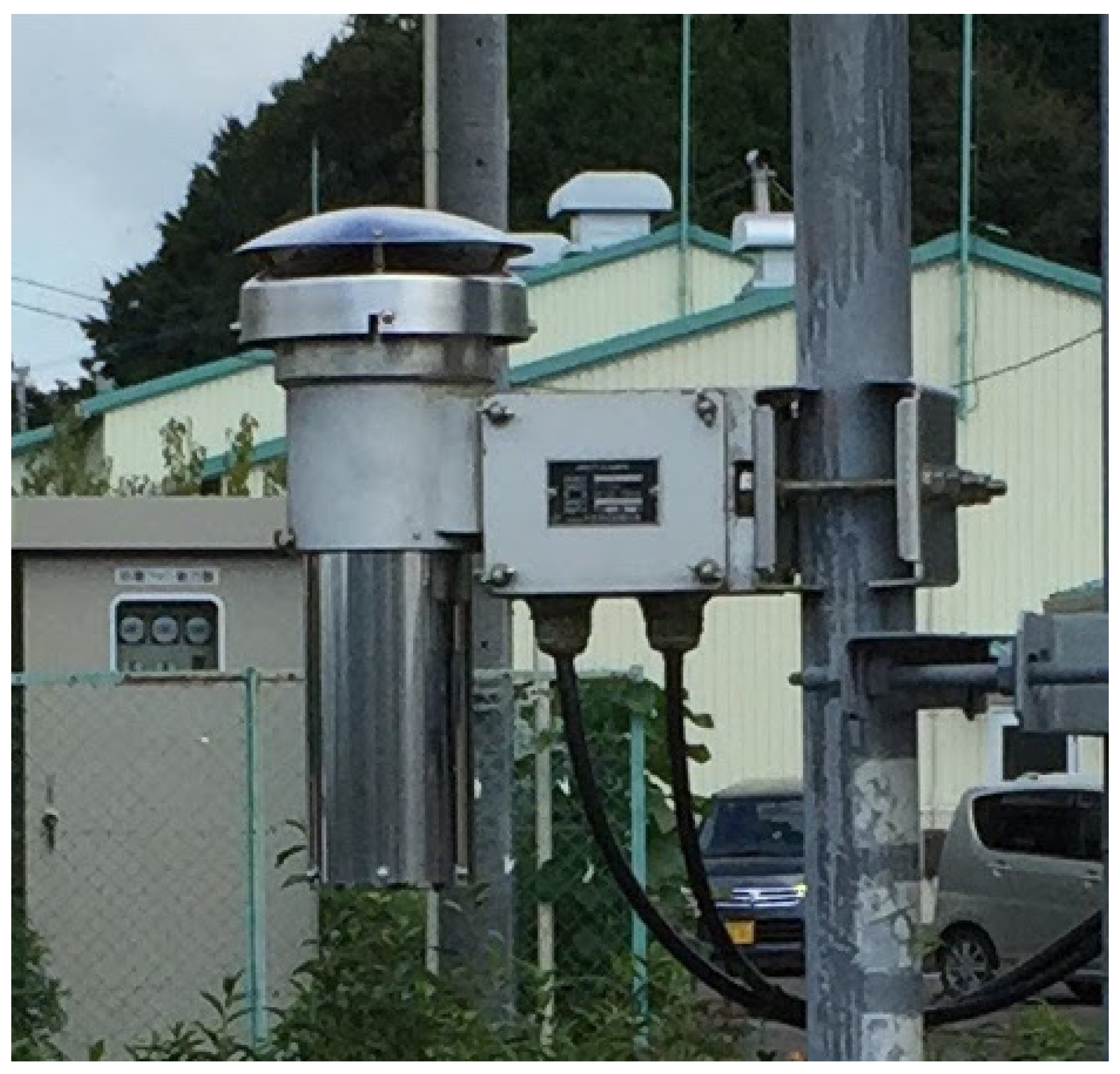

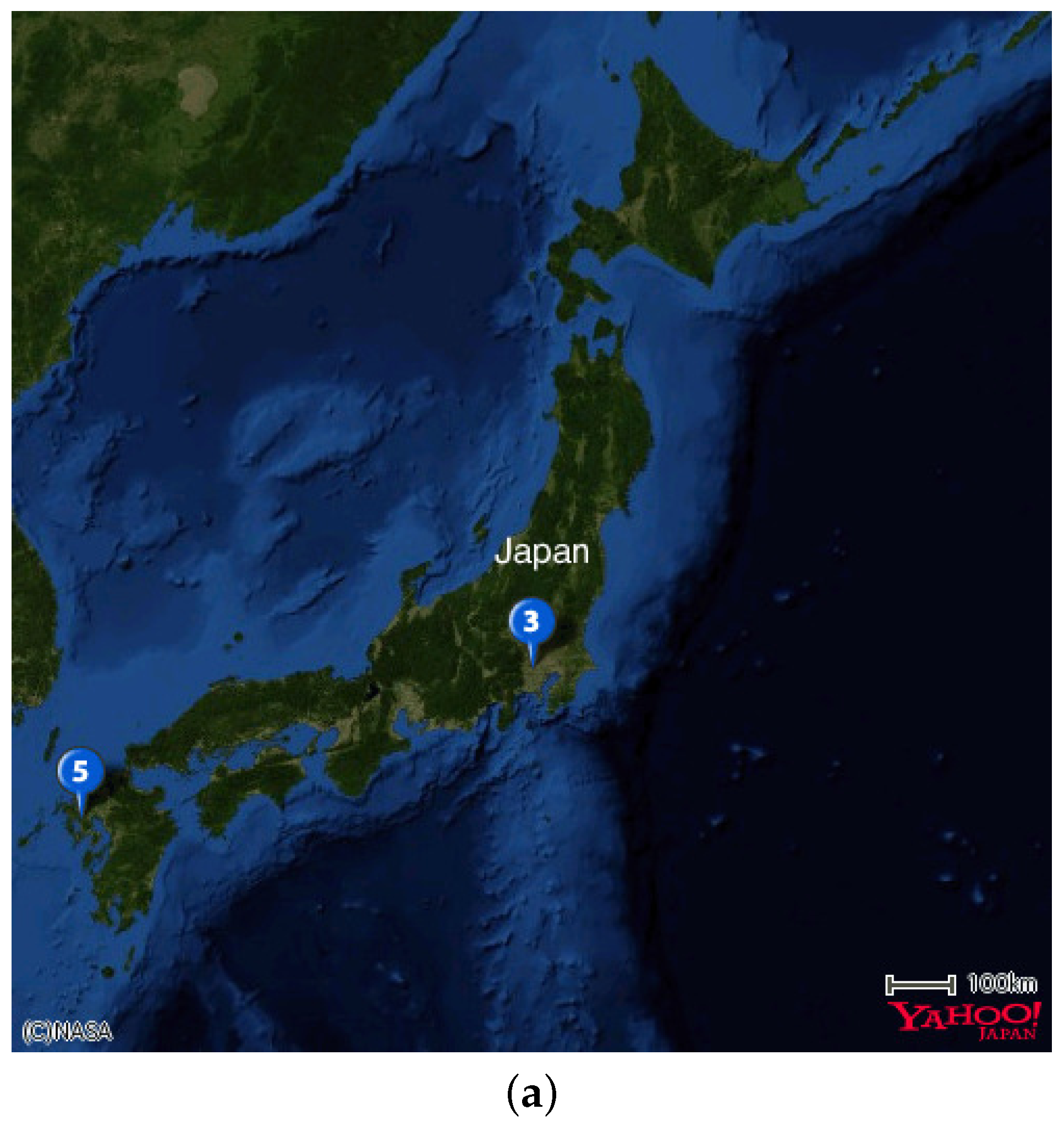

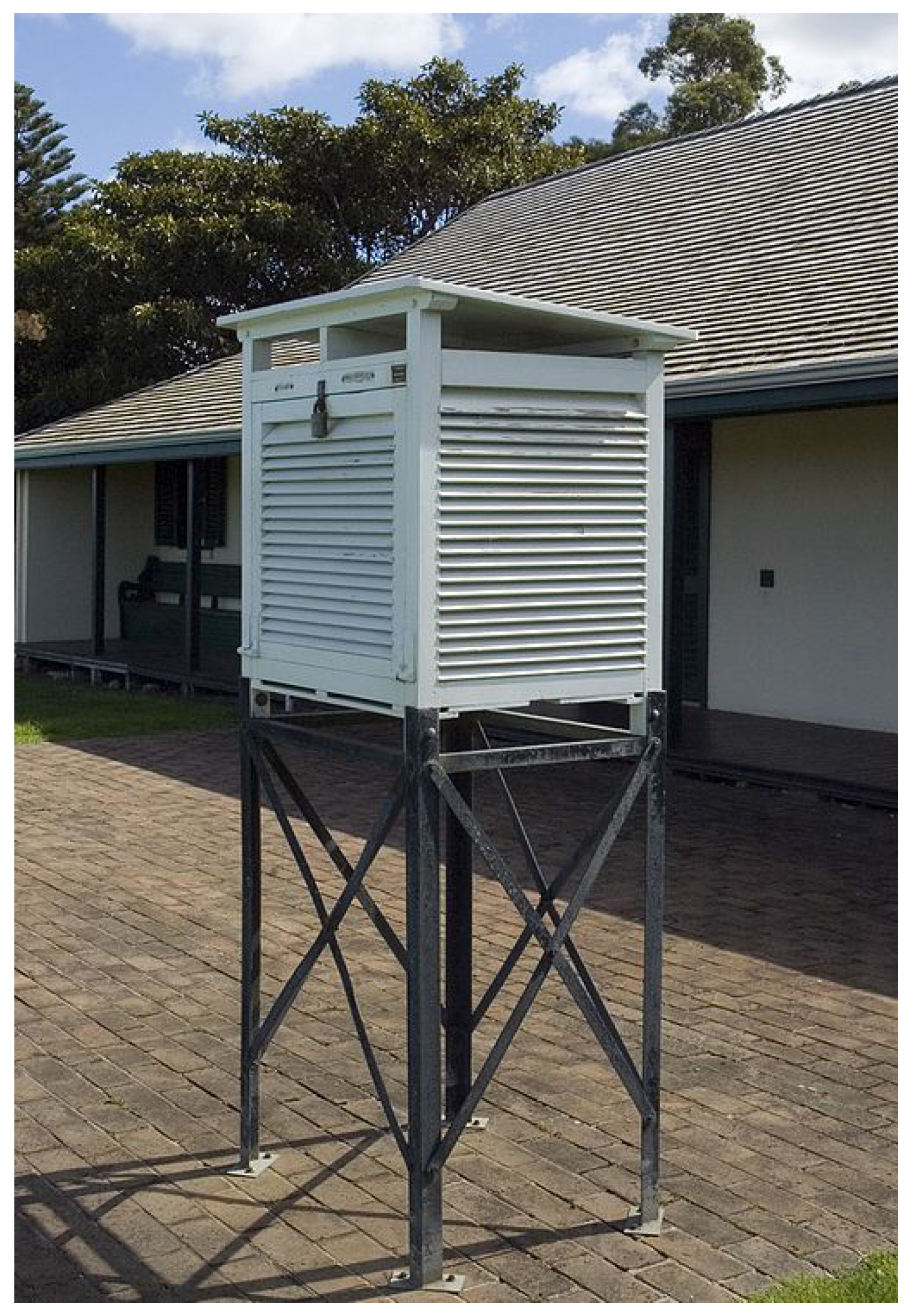
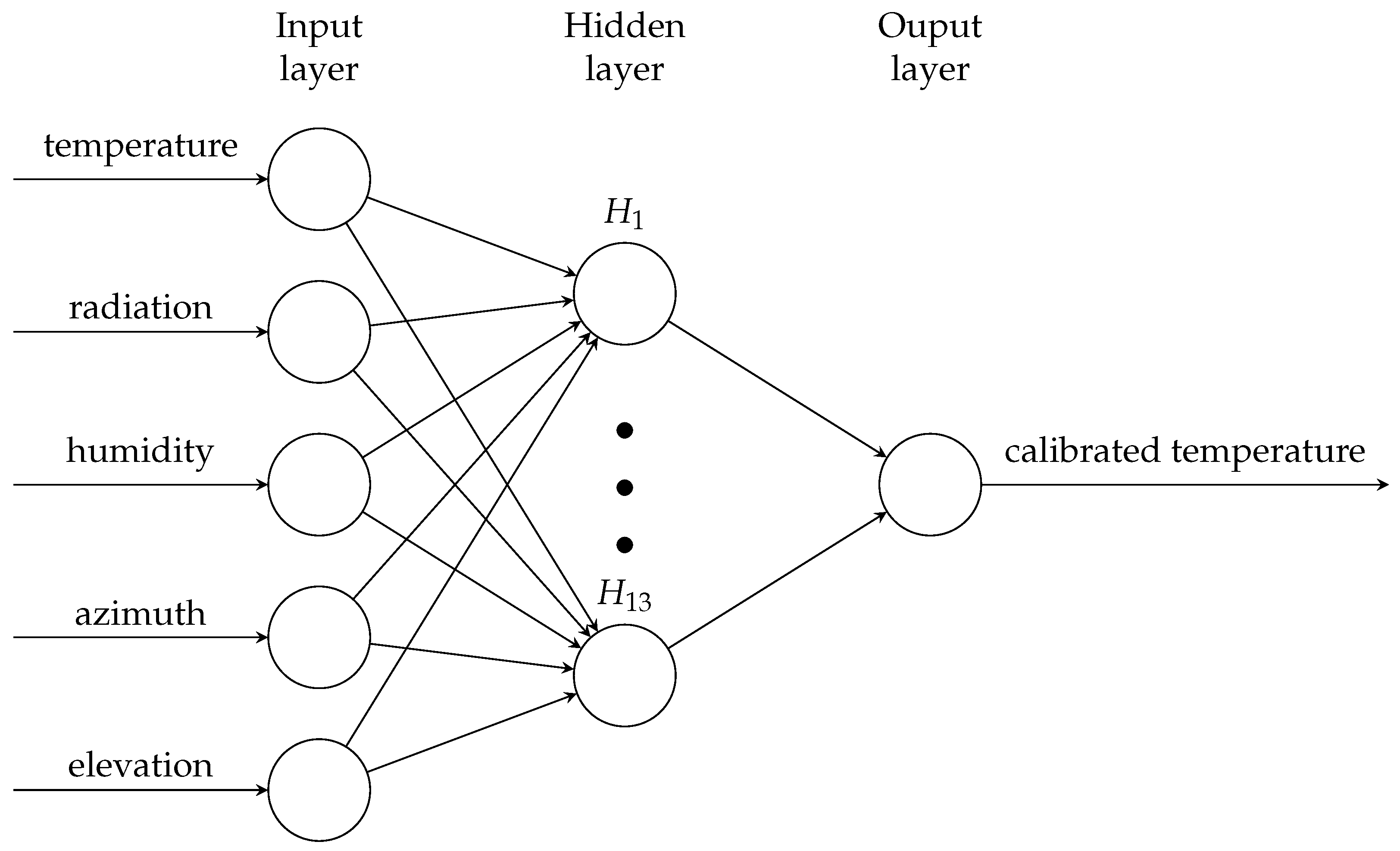
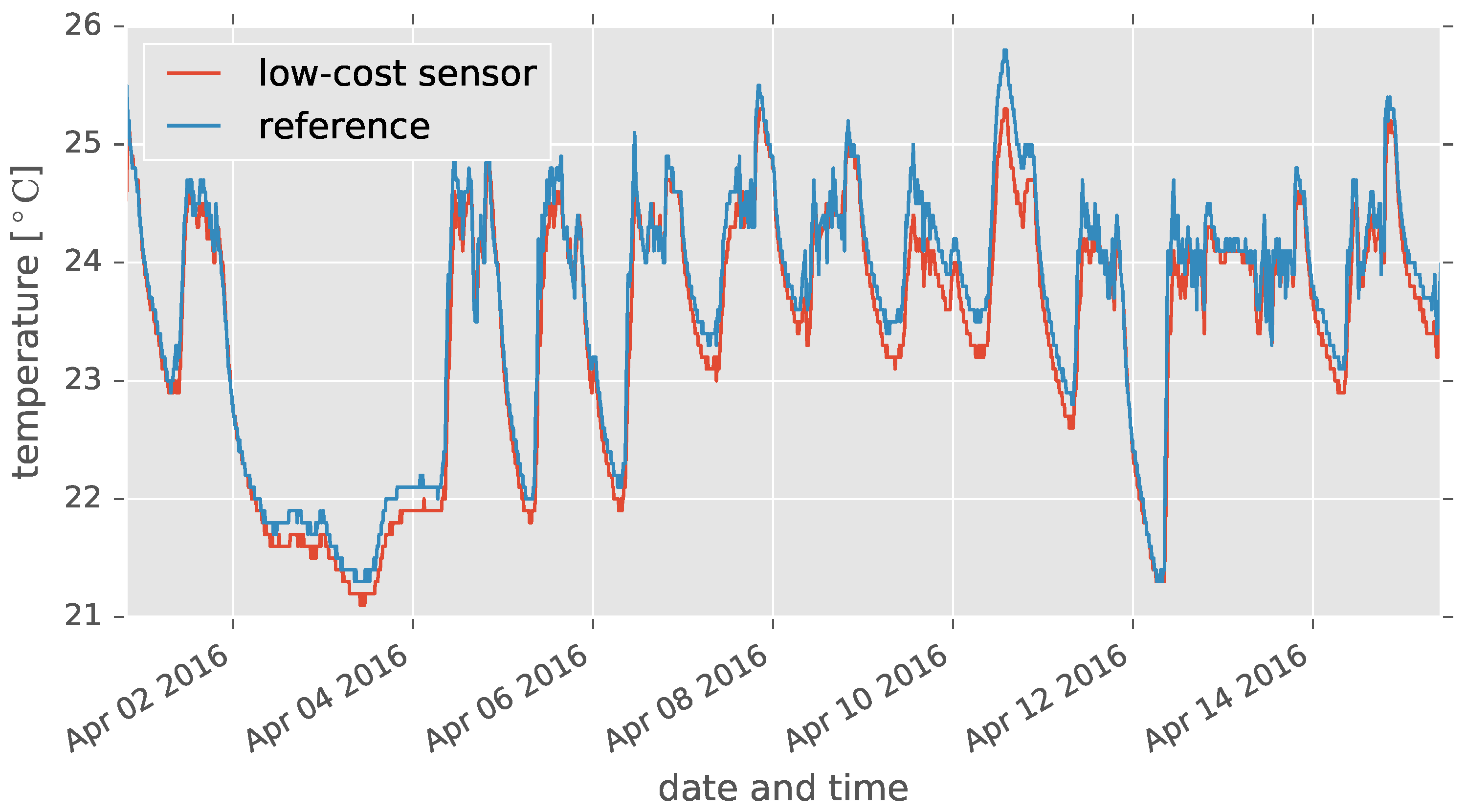
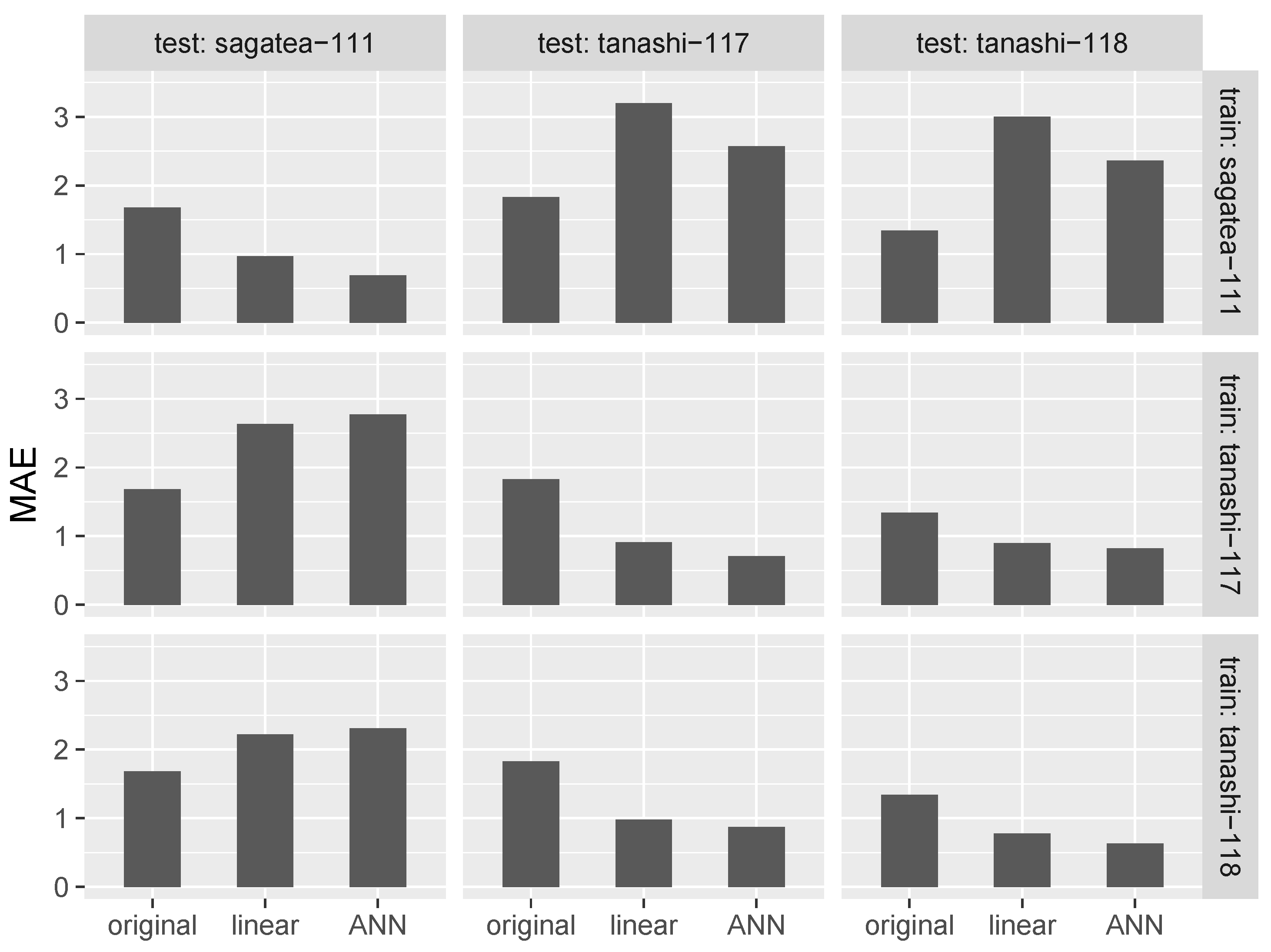

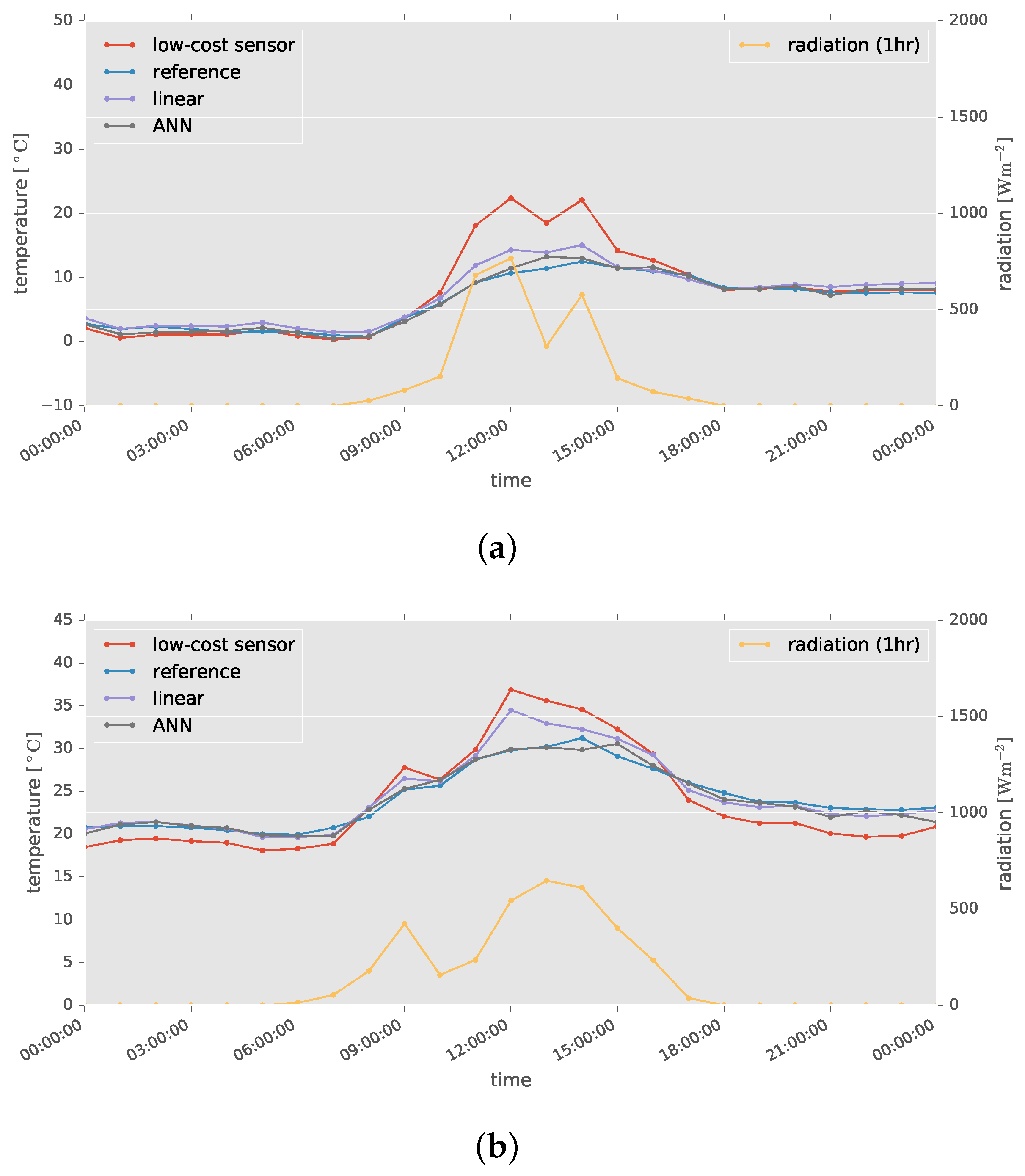
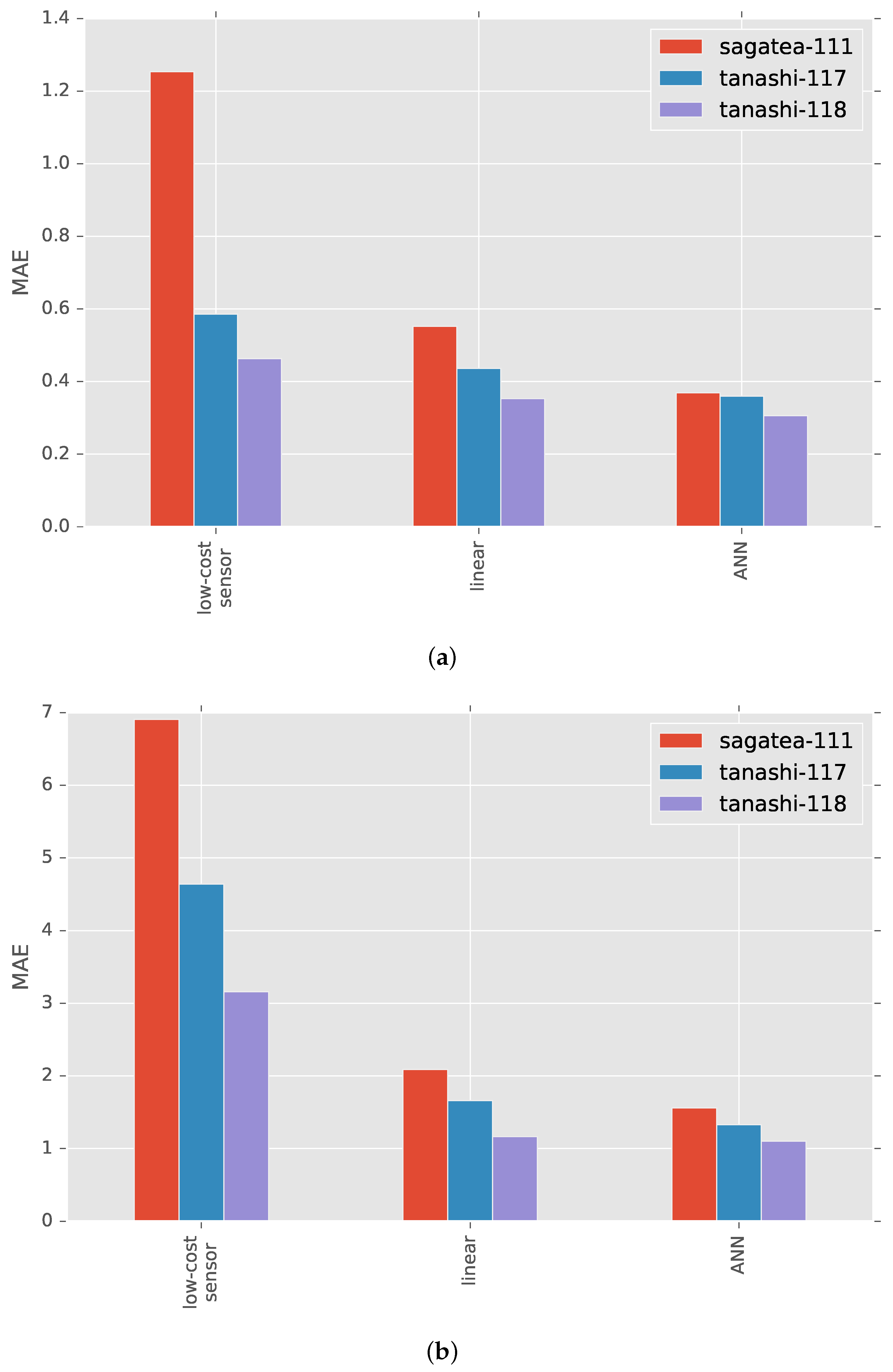
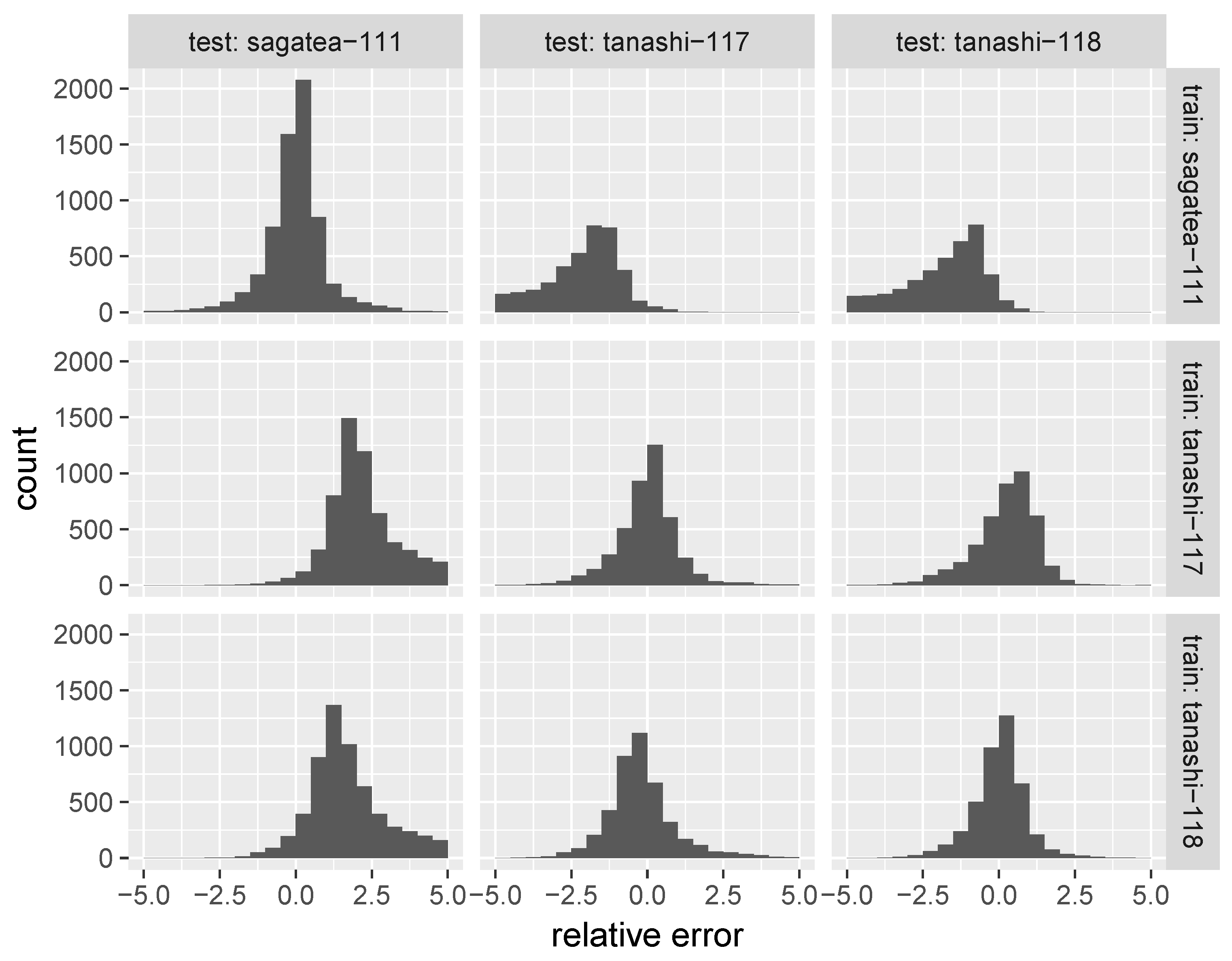
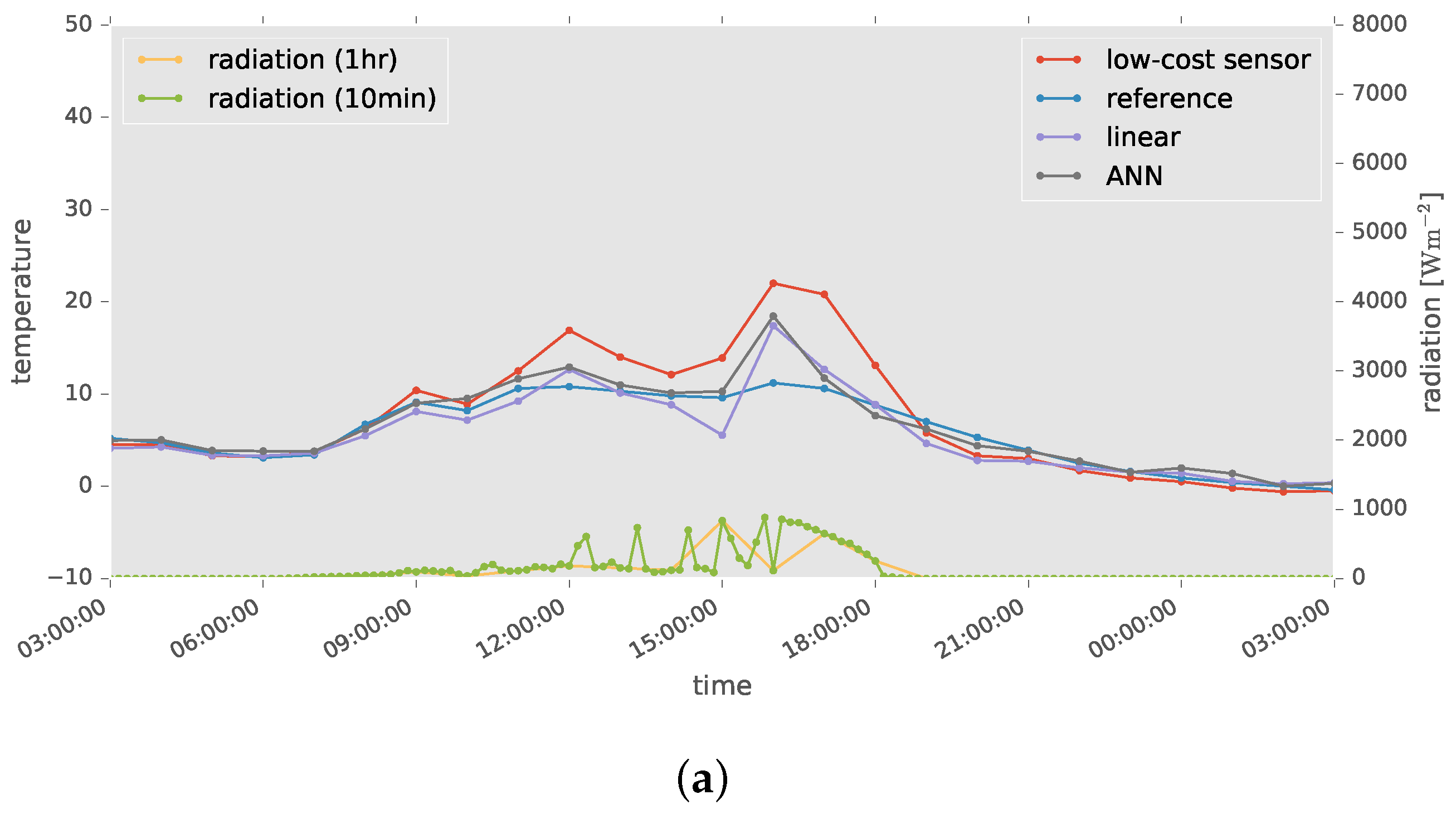

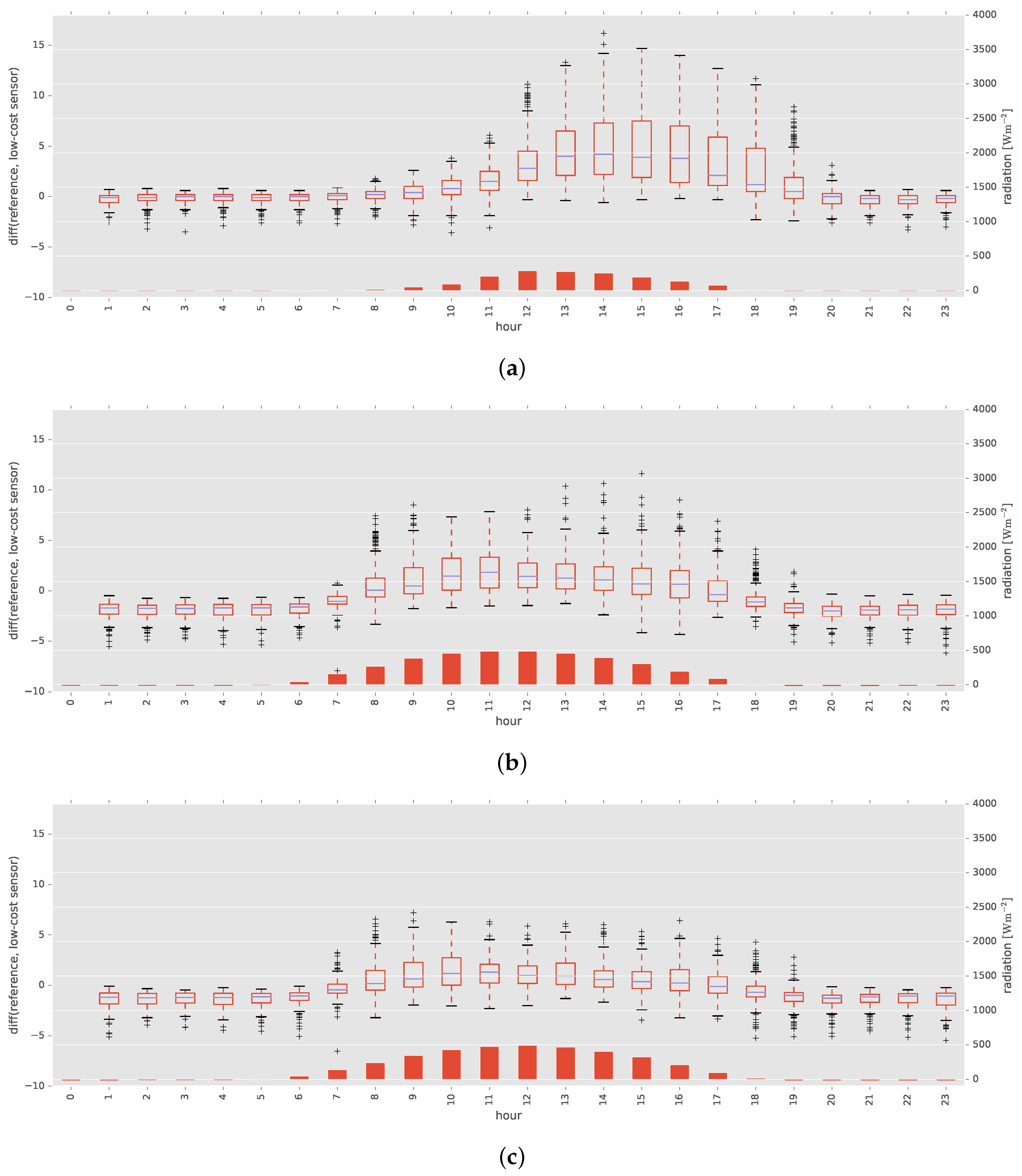
| Parameter | Value (°C) |
|---|---|
| Measuring range | to 123.8 |
| Resolution | 0.01 |
| Accuracy | (25 °C) |
| (0 to 40 °C) |
| Parameter | Value (°C) |
|---|---|
| Measuring range | −50 to 50 |
| Resolution | 0.1 |
| Accuracy |
© 2017 by the authors. Licensee MDPI, Basel, Switzerland. This article is an open access article distributed under the terms and conditions of the Creative Commons Attribution (CC BY) license (http://creativecommons.org/licenses/by/4.0/).
Share and Cite
Yamamoto, K.; Togami, T.; Yamaguchi, N.; Ninomiya, S. Machine Learning-Based Calibration of Low-Cost Air Temperature Sensors Using Environmental Data. Sensors 2017, 17, 1290. https://doi.org/10.3390/s17061290
Yamamoto K, Togami T, Yamaguchi N, Ninomiya S. Machine Learning-Based Calibration of Low-Cost Air Temperature Sensors Using Environmental Data. Sensors. 2017; 17(6):1290. https://doi.org/10.3390/s17061290
Chicago/Turabian StyleYamamoto, Kyosuke, Takashi Togami, Norio Yamaguchi, and Seishi Ninomiya. 2017. "Machine Learning-Based Calibration of Low-Cost Air Temperature Sensors Using Environmental Data" Sensors 17, no. 6: 1290. https://doi.org/10.3390/s17061290






